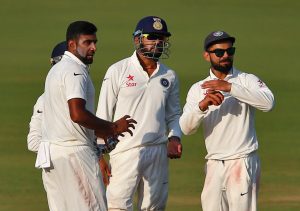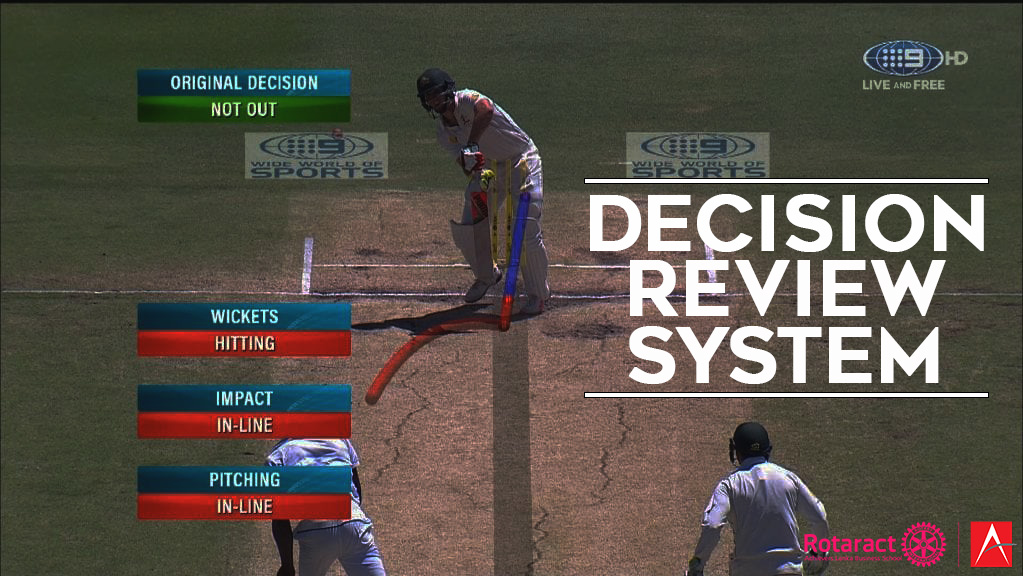“The Umpire’s decision is final.”
This was universally accepted in cricket until the 2008 test series between Sri Lanka and India where the Decision Review System was first tested, and the cricket world would never be same again. The Decision Review System (DRS) was officially launched by the ICC on 24th November 2009 during the first test match between New Zealand and Pakistan at the University Oval in Dunedin. It was first used in ODIs during the England’s tour of Australia in January 2011.
The DRS is a technology-based system used in cricket to assist the match officials with their decision making. Television replays, technology that tracks the path of the ball and predicts what it would have done (known as Hawk-Eye), microphones to detect small sounds when hitting the bat or pad (known as Snickometer or Ultra-Edge), infra-red imaging to detect temperature changes as the ball hits the bat or pad (known as hotspot) are the main elements that are been used currently with DRS.
It’s been 10 years since the DRS has come into the cricket world and it has certainly proven to cause a major impact on the final outcome of some matches. As a kid, I remember watching the first series where the DRS was first tested. I thought to myself that day itself that this system is going to cause a big change in the future. A few decisions were overturned during that match itself. One such decision was when TM Dilshan was given out caught behind early in his innings and he opted for a review. The decision was overturned, and he went on to score a century which gave Sri Lanka a huge advantage into winning that particular test match.

As I mentioned above, DRS has caused a major impact on the final outcome. Even though this system was introduced in a way it would cause a good impact, there have been many times where the DRS decisions have been controversial. Initially, DRS came under heavy criticism especially from the BCCI due to a perceived lack of clarity in the review process. When this system was first used, the protocols and the technology was half-baked. The process was badly handled. There was no one really in charge of the system by then and the TV director was the person who had to take charge. As an example, when reviewing an LBW decision, the point of impact is very important. Even the slightest changes can cause a big difference at the end. During this series, the point of impact was manually amended by the operators and which led to some obviously inaccurate decisions. Now the technology is solely controlled by the ICC. Still, the technology has some major confusions. One such example is the ball tracking mechanism. Only a handful of people know what the exact mechanism behind this system is. If the ICC could take the veil off the system and explain it to the entire world, it can avoid a lot of confusions caused.
The major problem with DRS now is in its protocols. Why does the benefit of the doubt go to the umpires? If the umpire gives a batsman out lbw, the batsman is even out if the even if a minute fraction of the ball is shown to be clipping the stumps. If on the other hand, the umpire has given the batsman not out, he will remain not out even if 50% of the ball is showing to be hitting the stumps. These are huge margins given for umpires. If the system is to be claimed near perfect, then what is the need for margins? Even if there are margins, why not have a clear protocol? For example, more than 50% of the ball hitting the stumps mean out and anything less than that is not out, irrespective of the decision of the on-field umpire.
Then there is another major question of what actually constitutes DRS. In some countries ball tracking, hotspot and Real-time Snicko are all included. But in others, only ball tracking is enough to constitute DRS. It’s true that all this technology is very expensive. There are boards which can’t even afford the ball tracking system. So, the system becomes unfair where some countries can afford the technology while some can’t afford, so they are forced to go with a truncated version of the system.
The DRS should comprise of a single universal system and should be applicable across the cricket world. I believe this can be achieved by having a central fund allocated to providing the system wherever international cricket is played. I believe cricket should have enough money to be able to set up a corpus for technology.
The DRS is a good option to omit human errors which can change the decisions at crucial moments in crucial games. It must be provided with the right environment and a rigid protocol to reduce the confusions that can be caused by the system. I would like to leave everyone with a question.
Do you believe that the Decision Review System has proven to be beneficial or not to the cricket world?
Rtr. Thisura Ramanayake
